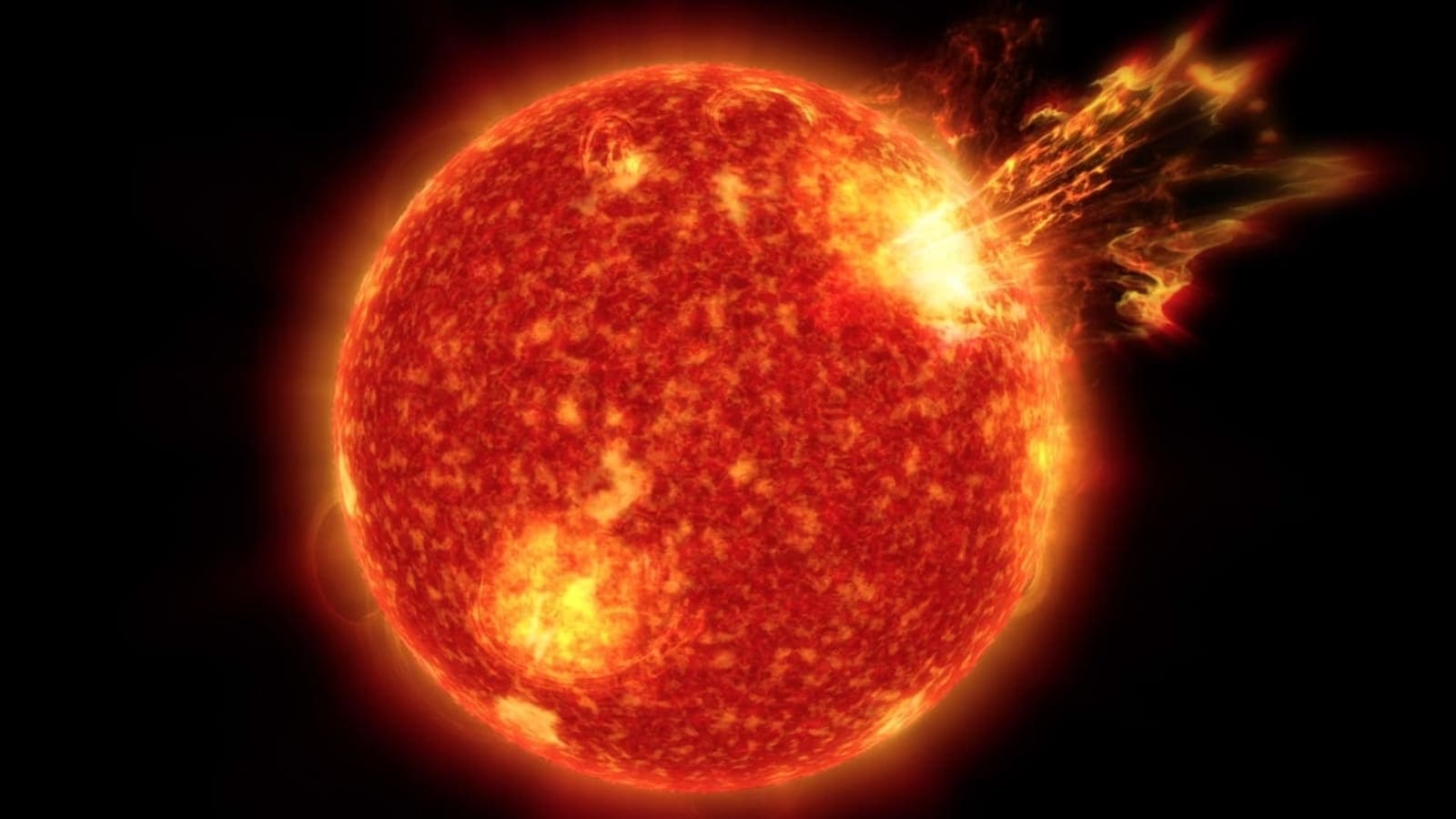As many as 3 CMEs could hit the Earth today; Solar storm strike likely - Check details
Three separate CMEs have a likelihood of striking the Earth and triggering a solar storm today, November 4. Further, things can get more complicated if these turn into cannibal CMEs.

This week's solar storm prediction models claimed that today, November 4, is likely to be the worst affected by solar activities. The prediction will likely come true as three separate coronal mass ejections (CMEs) are headed for the Earth. The first two of them are slightly off-target but the forecast says it can deliver glancing blows to the planet. But things can quickly change if they combine to form a cannibal CME. The third one is the riskiest, which is directly headed for the Earth. Overall, there is a chance that we may see a G2-class storm later today.
According to a report by SpaceWeather.com, “as many as three CMEs could make contact with Earth's magnetic field. The first two CMEs are mostly off-target, but they could deliver glancing blows on Nov. 4th. If they combine to form a Cannibal CME, the result could be a minor G1-class geomagnetic storm”. It also added that the greater interest is the third CME, which left the Sun yesterday.
Solar storm fears rise
As per the report, the origin point of the third CME is “a complex eruption of magnetic filaments” that occurred in the northern hemisphere of the Sun. A NASA model of the same has revealed that it can hit late at night today.
The worst possible scenario for us could be if the first two CMEs turn cannibal and the third hits while the effect of the first is still active. This can create a solar storm with the potential of G2-class. This can show its impact even in the mid-latitude regions.
But if that particular set of conditions are not met, we may only have to deal with a G1-class storm. Such solar storms may not be strong enough to affect mobile networks or damage satellites, but they can still cause radio blackouts and disrupt GPS signals.
NOAA's DSCOVR satellite's role in solar storm monitoring
NOAA monitors solar storms and the Sun's behavior using its DSCOVR satellite which became operational in 2016. The recovered data is then run through the Space Weather Prediction Center and the final analysis is prepared. The different measurements are done on temperature, speed, density, degree of orientation, and frequency of the solar particles.
Catch all the Latest Tech News, Mobile News, Laptop News, Gaming news, Wearables News , How To News, also keep up with us on Whatsapp channel,Twitter, Facebook, Google News, and Instagram. For our latest videos, subscribe to our YouTube channel.





























